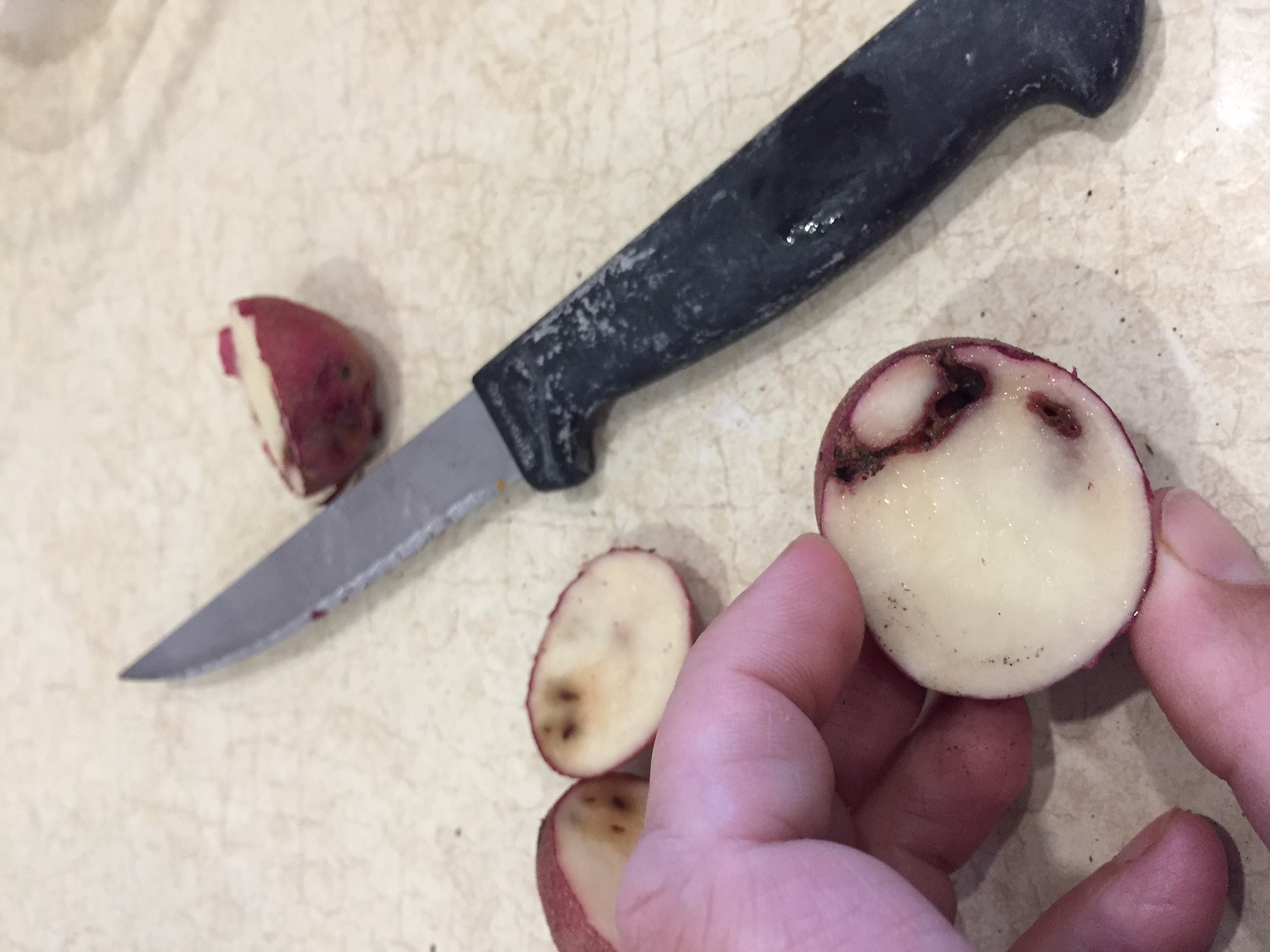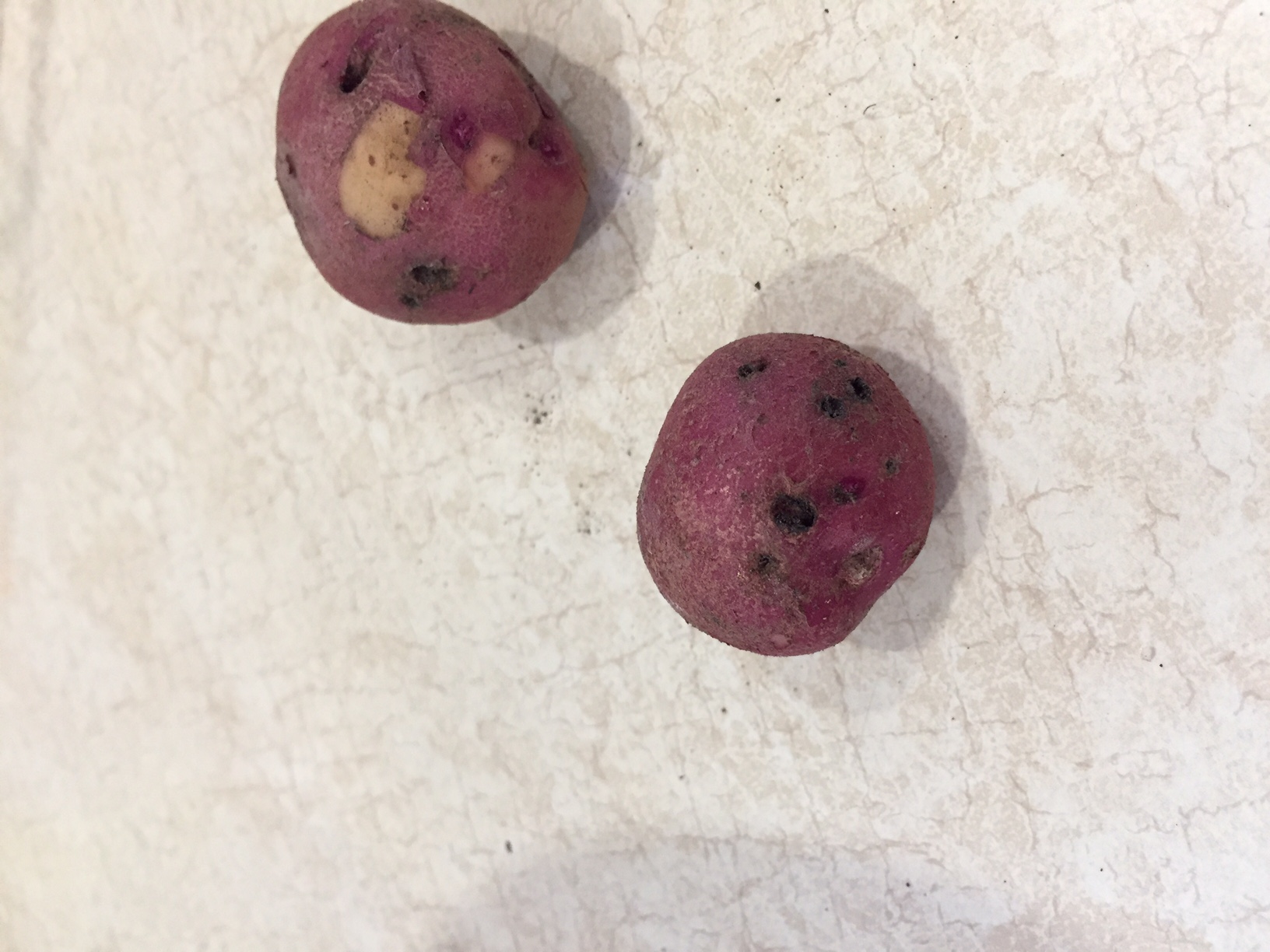
Wireworms
Nuisance to damaging

Wireworms are hard-bodied, wire-like, yellow to brown larvae found during all times of the growing season in almost any type of soil. Adults of the larvae are called click beetles.
There are hundreds of species of wireworms. They injure crops by devouring seeds in the soil, cutting off small underground stems and roots, and by boring in the larger stems, roots
Typical symptoms of wire worms is an irregular pattern of plants dying. Pull one of the plants and examine the roots or tubers for wireworm.
Wireworms chew deep pits and tunnels in the developing tubers, making the vegetable unappetizing.
Wireworms prefer grasses, so if you are planting in a newly dug garden that was previously grass or prairie, avoid planting root crops.
To test for wireworms, bury a 5 cm (2") piece of carrot or potato three inches underground. After 3-4 days, dig up the pieces. If you find one or more wireworms, damage to the coming crop can be severe. Consider planting elsewhere or in a suitably sized container.
Control
- To prevent wireworm infestations, avoid planting potatoes or other root crops in newly cultivated soils. Plant other crops instead for the first couple of years.
- Since there are always an overlapping of generations of wireworm in the soil, rototilling in fall and spring to bring wireworm egg and larvae to the soil surface will expose them to colder weather which can kill the insect. It also exposes the insects to natural predators.
- Minimize irrigation in infested soils as wireworms do poorly in dry conditions.
- Rotate root crops every year since continuous root crops tend to increase wireworm numbers.
Wireworm problems in the garden tend to decline with time, as the wireworms move out of the garden and into other preferred food crops such as grasses.
Source:
Howard, R. J., Seaman, W. L., & Garland, J. A. (Eds.). (2002). Diseases and pests of vegetable crops in Canada. Vancouver, British Columbia: The Canadian Phytopathological Society and the Entomological Society of Canada.

